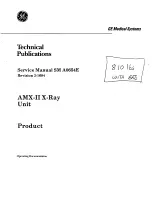
24 | Ottobock
Attention:
The Auto-Grasp feature of the SUVA-Sensor Technology, which is primarily initiated by contact
with the sensor, should be monitored in certain situations, such as when shaking hands, to avoid
applying too much grip force.
Please always leave your prosthetic hand in slightly open position when not in use. This will pro-
tect the hand’s sensors and mechanism from possible damage caused by high permanent load.
FlexiGrip
Thanks to the FlexiGrip feature, you can change the position of an object within the Electric Hand without
bothering to open and close the hand again. Just shift the object in the prosthetic hand, and the fingers will
automatically re-grasp the object – much like a natural hand.
MyoHand VariPlus Speed
The MyoHand VariPlus Speed is a myo-electrically controlled prosthetic hand that is characterised by a high
grip speed in connection with an innovative and sensitive control concept.
Different proportional and digital control modes with 1 or 2 electrodes, linear transducer or switch allow
individual adaptation to the requirements of the respective patient.
The MyoHand VariPlus Speed is based on the Ottobock DMC System (DMC = Dynamic Mode Control). This
system, which has been developed by Ottobock, uses two independent measurement and control systems
in order to optimally adapt the grip speed and grip force to the patient's muscle signal.
The proportional DMC control allows the amputee to control grip speed and grip force proportionally to his
muscle signal. As soon as the strength of the muscle signal changes, grip speed and grip force immediately
adapt to the new muscle signal.
During the fitting, your prosthetist considered six control modes to select one most suitable for your specific
requirements. All six control modes are described in the appendix with examples.
General Safety Instructions
Failure to follow the safety instructions given below can lead to damage to or malfunction
of the product. Follow the safety instructions and the stated precautions in this accompa-
nying document.
Driving Motor Vehicles
An upper extremity amputee's ability to drive a motor vehicle is determined on a case-by-case
basis. Factors include the type of fitting (amputation level, unilateral or bilateral, residual limb con-
ditions, design of the prosthesis) and the amputee's abilities. All persons are required to observe
their country’s national and state driving laws when operating vehicles. For insurance purposes,
drivers should have their driving ability examined and approved by an authorised test centre.
For maximum safety and convenience, Ottobock recommends that, at the very least, a special-
ist evaluate the need for any adaptations to the car (such as by installing a steering fork). It is
imperative that the driver is able to operate the vehicle without any risk with the System Electric
Hand turned off. Driving with the System Electric Hand turned ON may present a risk if the hand
inadvertently moves due to unintentional muscle contraction or other causes.
Caution:
Before an arm prosthesis with a quick-disconnect wrist can be used to drive a vehicle, the
terminal device must be positioned in such a way that a slight turn of it cannot disconnect the
hand from the prosthesis.
Summary of Contents for MyoHand VariPlus Speed 8E38-9
Page 2: ...2 4 3 1...
Page 176: ...176 Ottobock 2 AutoControl LowInput 3 VarioControl 1 1 1 1 2 100 N 3 VarioControl 1...
Page 177: ...Ottobock 177 1 2 100 N 3 VarioControl 4 VarioDual 2 2 n 1 2 1 2 1 130...
Page 178: ...178 Ottobock 4 VarioDual 5 DigitalControl 2 1 1 1 2 5 DigitalControl 1 1 5 DigitalControl...
Page 181: ...Ottobock 181...
Page 182: ...182 Ottobock...
Page 183: ...Ottobock 183...
















































